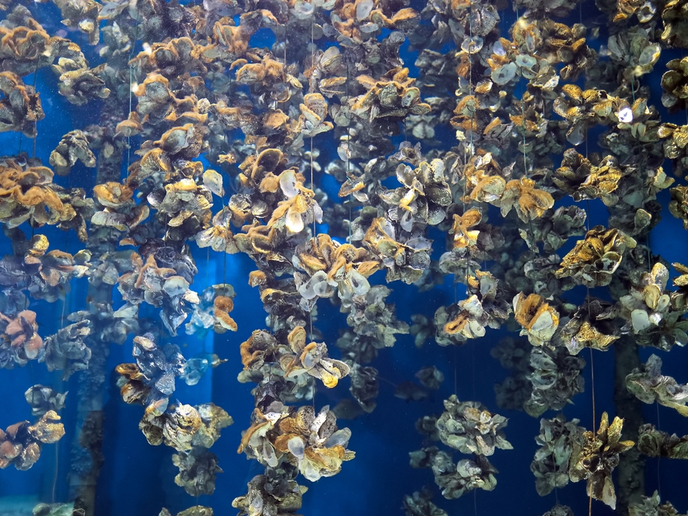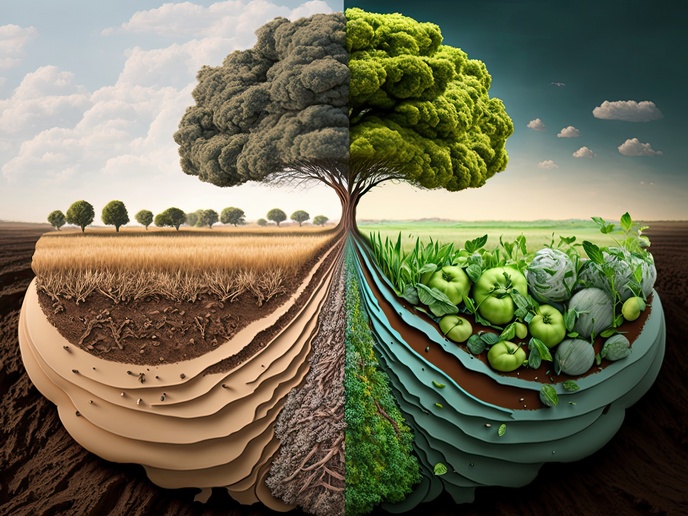Sustainable beauty products from microalgae give blue economy a makeover
Marine and freshwater ecosystems contain an enormous diversity of microalgae, but the number of species that have been analysed is surprisingly small. Furthermore, only a handful of biomolecules derived from microalgae are currently used in health and cosmetic applications and in aquaculture. The EU-funded ALGAE4A-B(opens in new window) project addressed this situation, combining biotechnology research with state-of-the-art biomass production technologies to develop novel microalgae-based products for the cosmetics and aquaculture industries. ALGAE4A-B supports European capacity building and the strategic objectives of EU Blue Growth(opens in new window) and Marine Biotechnology(opens in new window) to harness the untapped potential of Europe’s seas and coasts for training and sustainable growth. “Microalgae production is a sustainable and environmentally friendly industrial process; no nutrient inputs are required and as microalgae grow in sunlight, they convert the greenhouse gas CO2 into a complex and high-value biomass,” says project partner Deborah Power. The project is a Marie Skłodowska-Curie Research and Innovation Staff Exchange Evaluations (MSCA-RISE) initiative, promoting international and cross-sector collaboration through exchanging research and innovation staff and sharing knowledge and ideas from research to market (and vice versa). Consortium members built on the success of the earlier MSCA-RISE ALGAECOM initiative, which mined microalgae for bioactive molecules.
Metabolic pathways identified
Researchers developed and optimised state of-the-art production facilities, targeting Nannochloropsis, Tetraselmis, Phaeodactylum and Isochrysis microalgae species. Scale-up showed that the behaviour of microalgae is very different between laboratory-based and industrial-scale production. “This highlights the need for validation of laboratory-based studies by full-scale industrial trials,” Power explains. Project partners also developed omics resources for both microalgae and fish, including analytical tools available to all industrial partners through the National Center for Biotechnology Information(opens in new window) and other public databases. These involved genomes, transcriptomes, proteomes and metabolomes of microalgae as well as transcriptomes and microbiomes of the highly prized aquaculture fish species sole (Solea senegalensis). In addition, researchers mined data to identify the pathways underpinning metabolic regulation and productivity of microalgae to give deeper insight into these processes, and the molecular basis of their beneficial effects in aquaculture. They evaluated microalgae extracts for antioxidant activity and beneficial anti-ageing effects on dermal skin cell cultures and discovered that enriched microalgae polysaccharide extracts show beneficial properties. Finally, scientists examined the effects of novel products on fish larval plasticity and fish immune systems to produce high-quality fry and develop a new range of microalgae products for the aquaculture industry. A novel extract with epigenetic reprogramming effects in sole based on the crude extracts of the microalgae Nannochloropsis gaditana was demonstrated to have potential as an immunostimulant for aquaculture.
Economic and environmental benefits
By bringing together microalgae producers, a natural cosmetics company and a sequencing company with academics, ALGAE4A-B was able to show the potential that microalgae hold for both cosmeceuticals and fish health. According to Power: “The diversification of microalgae biomass production towards independent applications will allow the microalgae industry to access alternative markets in an uncertain, highly competitive and fast-changing commercial environment.” Furthermore, the knowledge transfer and training that took place at multiple levels in ALGAE4A-B strengthened industrial competitiveness in the areas of microalgae production and natural cosmetics. “The public will also directly benefit from a sustainable ‘clean industry’ that is environmentally friendly while generating wealth and jobs,” Power concludes.







